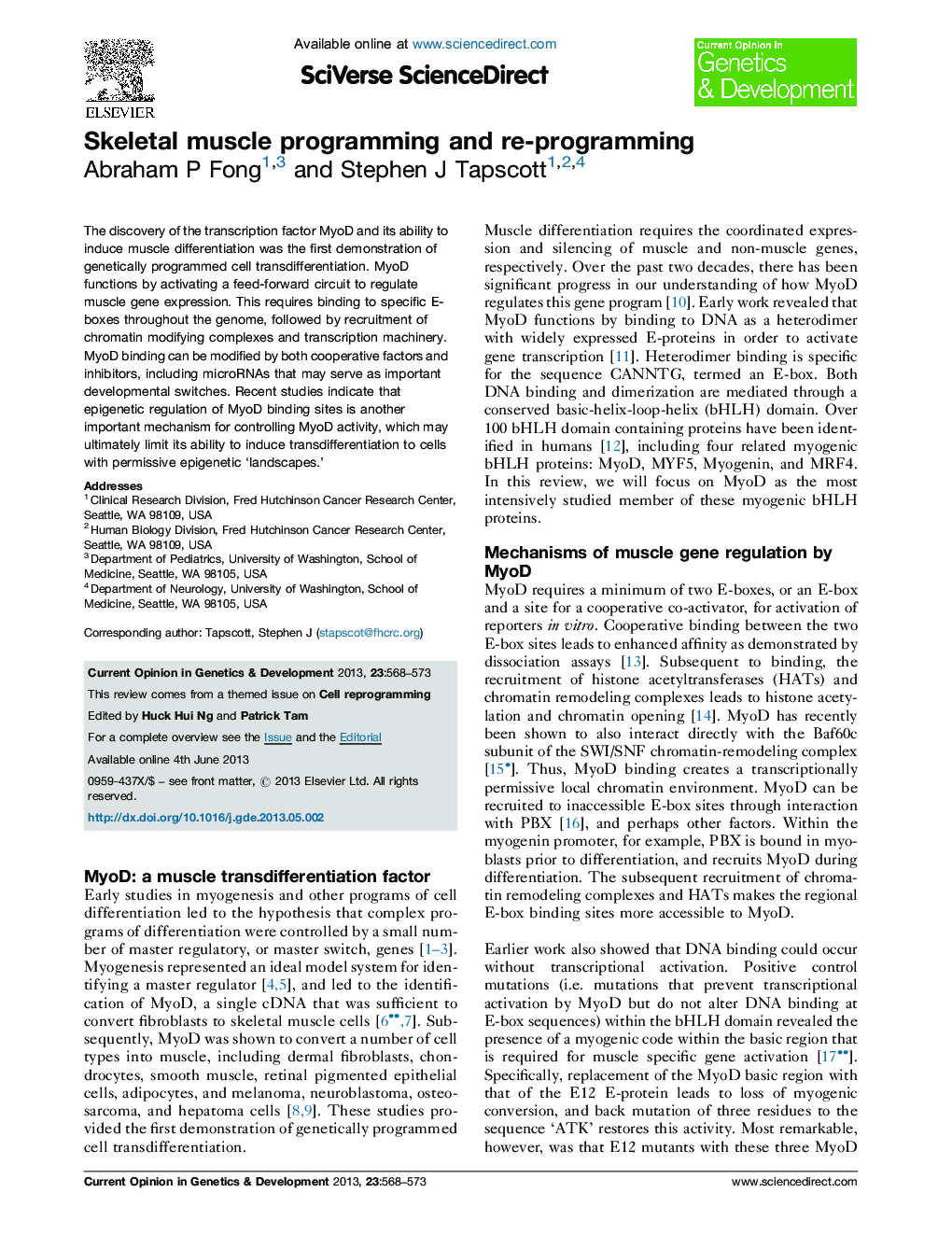| Article ID | Journal | Published Year | Pages | File Type |
|---|---|---|---|---|
| 5893661 | Current Opinion in Genetics & Development | 2013 | 6 Pages |
The discovery of the transcription factor MyoD and its ability to induce muscle differentiation was the first demonstration of genetically programmed cell transdifferentiation. MyoD functions by activating a feed-forward circuit to regulate muscle gene expression. This requires binding to specific E-boxes throughout the genome, followed by recruitment of chromatin modifying complexes and transcription machinery. MyoD binding can be modified by both cooperative factors and inhibitors, including microRNAs that may serve as important developmental switches. Recent studies indicate that epigenetic regulation of MyoD binding sites is another important mechanism for controlling MyoD activity, which may ultimately limit its ability to induce transdifferentiation to cells with permissive epigenetic 'landscapes.'
